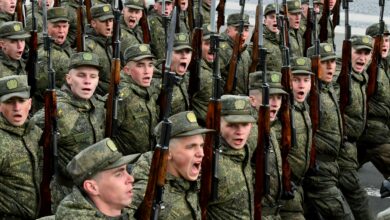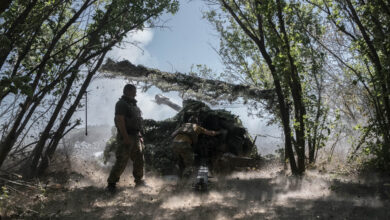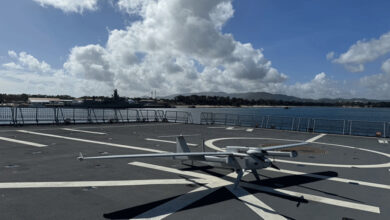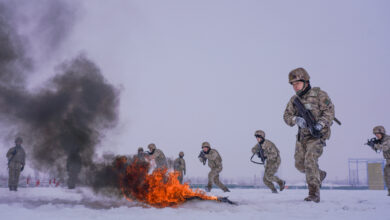The Russian military has lost 50 Orlan reconnaissance drones during the first three months of its invasion of Ukraine, according to open-source intelligence analysts.
The analysts, who have gathered evidence documented on social media for the Oryx Blog, reported visual confirmation of at least 50 Russian Orlan-10E unmanned aerial vehicles (UAV) lost since February 24.
Russia has also lost many other types of drones, according to their report.
https://twitter.com/oryxspioenkop/status/1528409856729829377?s=20&t=nP5lVyK7oZE5hLzynGeaDg
In an intelligence update, the UK Ministry of Defence explained the “pivotal” role UAVs are playing in the conflict. However, the agency noted the high level of attrition drones have suffered due to electronic jamming and being shot down.
“Russia has attempted to implement the concept of ‘Reconnaissance Strike’ it refined in Syria, which uses reconnaissance UAVs to identify targets to be struck by combat jets or artillery,” the agency wrote.
The ministry further explained that Russia is now avoiding sorties in Ukraine due to these high attrition rates and that the country is likely facing “a shortage…exacerbated by limitations in its domestic manufacturing capacity resulting from sanctions.”
Continued losses of its drones at the current rate would further degrade Russian forces’ intelligence capabilities, hampering their ability to continue the war, according to the UK Ministry of Defence.
Latest Defence Intelligence update on the situation in Ukraine – 21 May 2022
Find out more about the UK government's response: https://t.co/SJzZ5pcVoe
#StandWithUkraine
pic.twitter.com/bW5sc8zQbE
— Ministry of Defence
(@DefenceHQ) May 21, 2022
The Orlan-10E
Developed by the Special Technology Center in St. Petersburg, Russia, the Orlan-10E has been deployed with the Russian military since 2010.
It is designed for aerial reconnaissance and surveillance from a maximum altitude of 6,000 meters (3.7 miles).
The UAV can fly at a maximum speed of 70 miles per hour for up to 18 hours and can be controlled from around 90 miles away.
The aircraft is 1.8 meters (6 feet) long with a wingspan of 3.1 meters (10 feet) and a maximum takeoff weight of 18 kilograms (40 pounds), including a payload of 4.5 kilograms (10 pounds).
In its payload bay, the drone can reportedly carry an assortment of sensor options including daylight and thermal imaging cameras and 3D mapping gear, as well as laser designators that can indicate the precise location of a weapons system.
It is a medium-range, multi-purpose aerial platform for missions including battlefield reconnaissance, surveillance, search and rescue, target tracking, combat training, jamming, and detection of radio signals.












